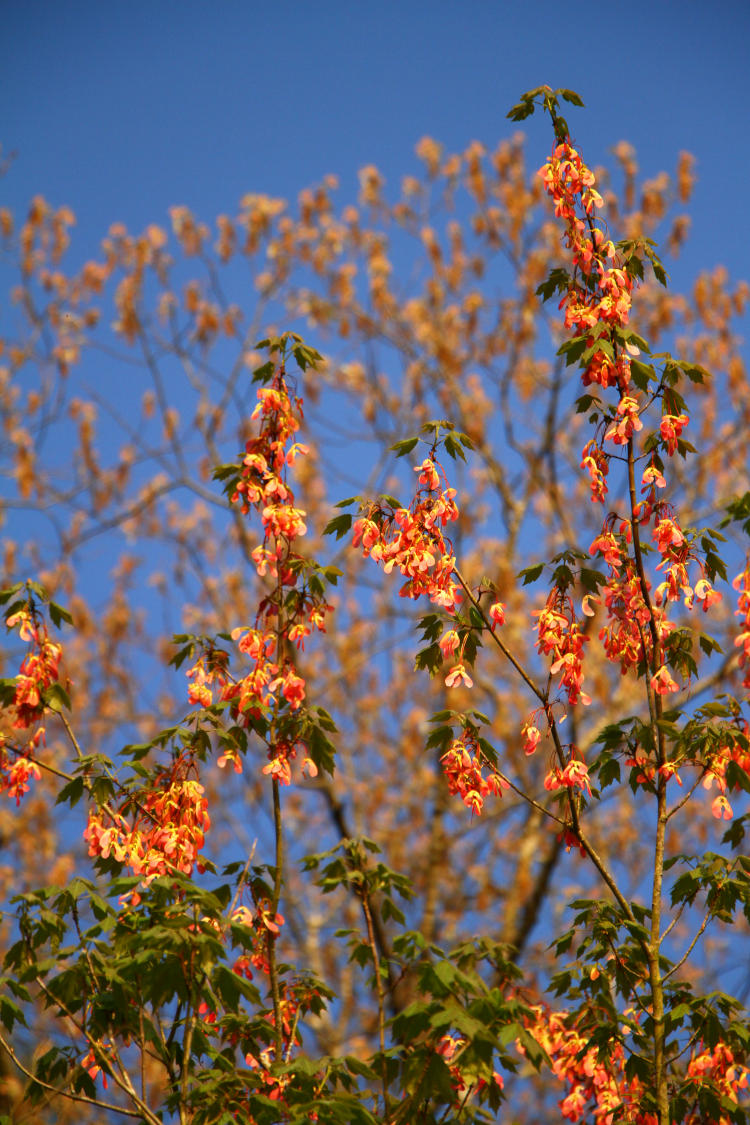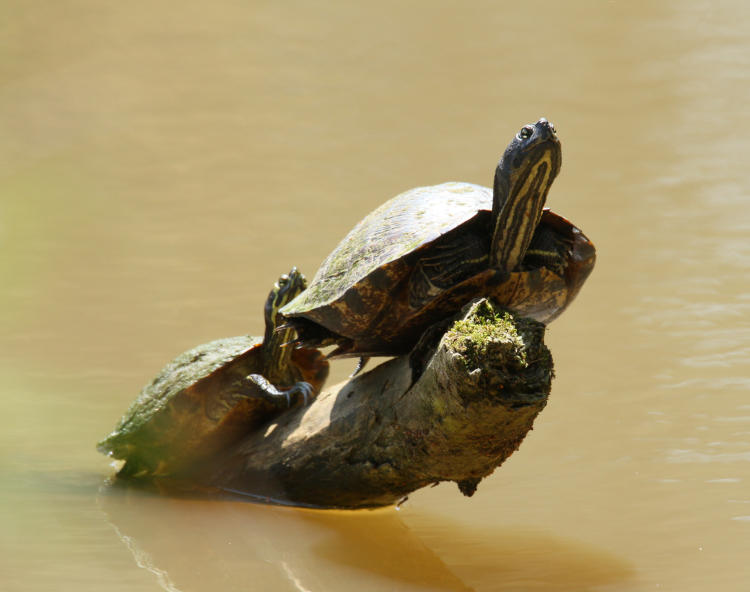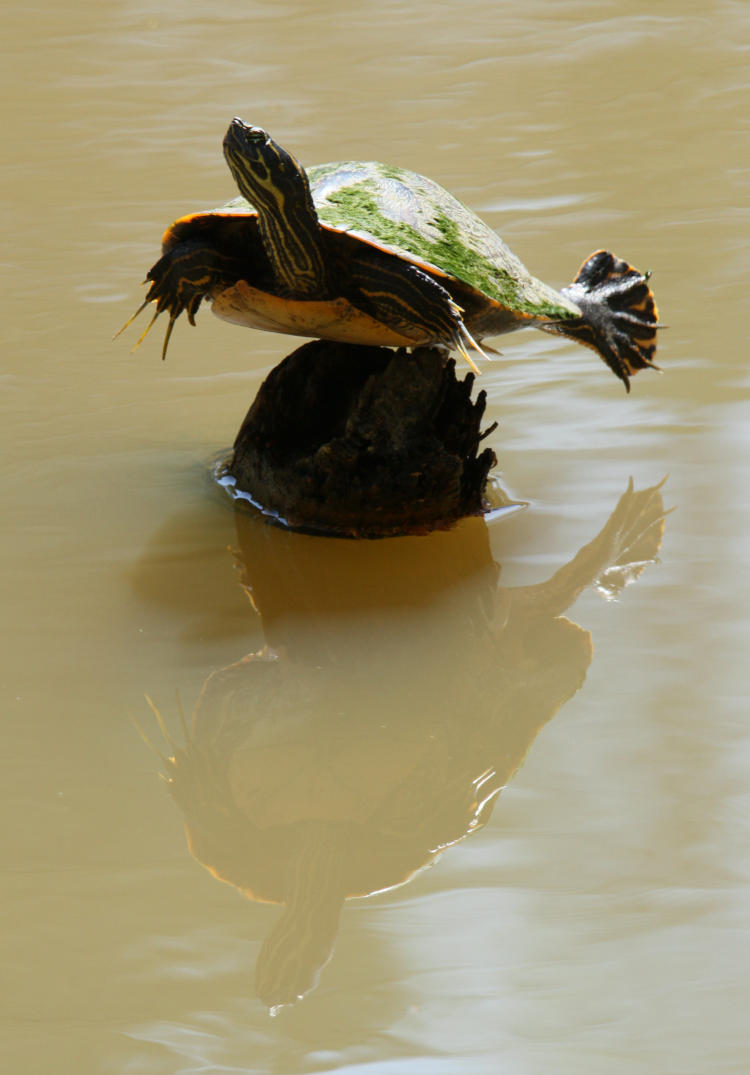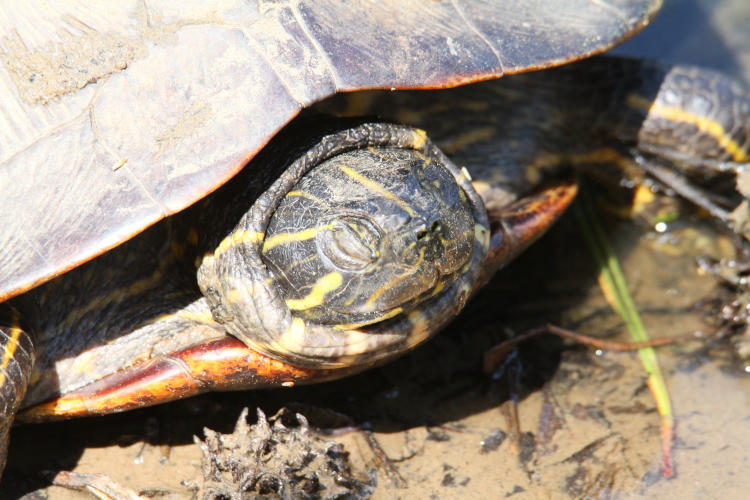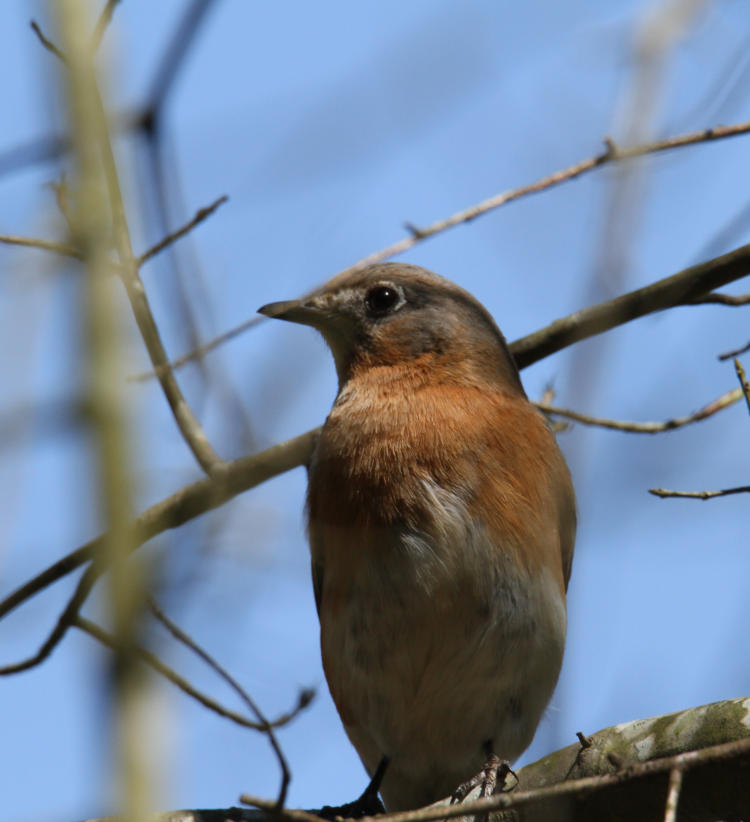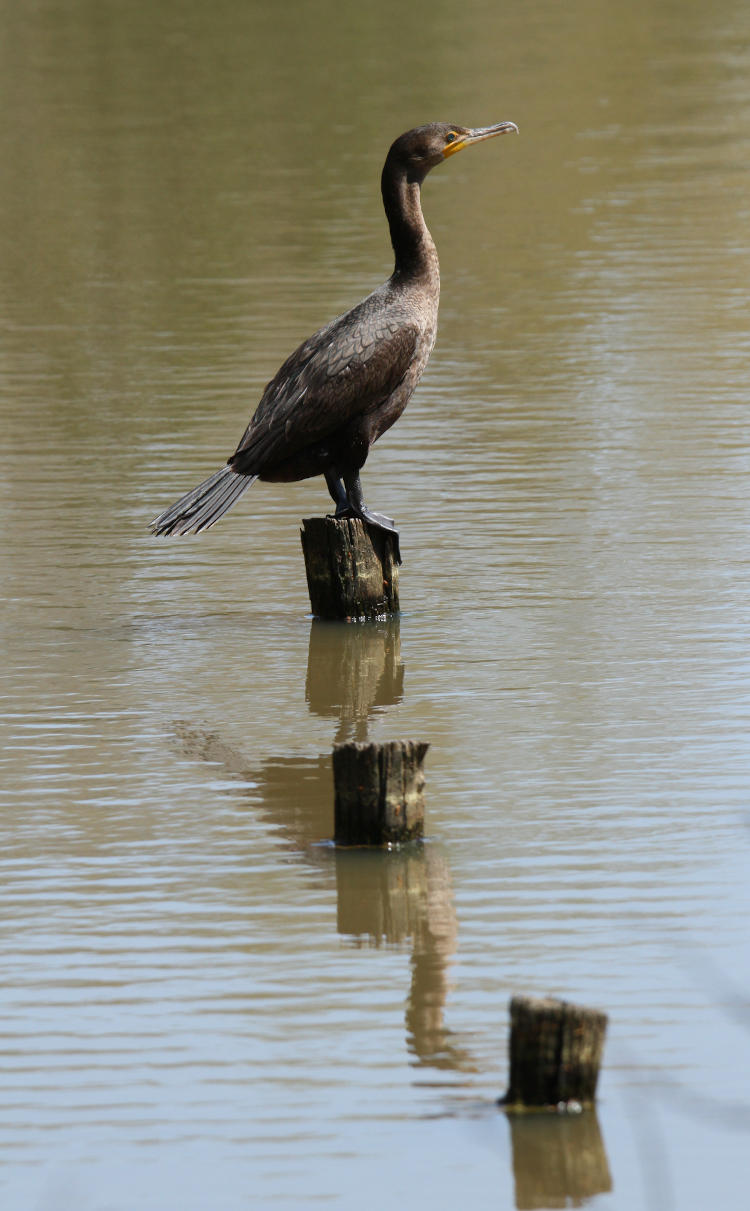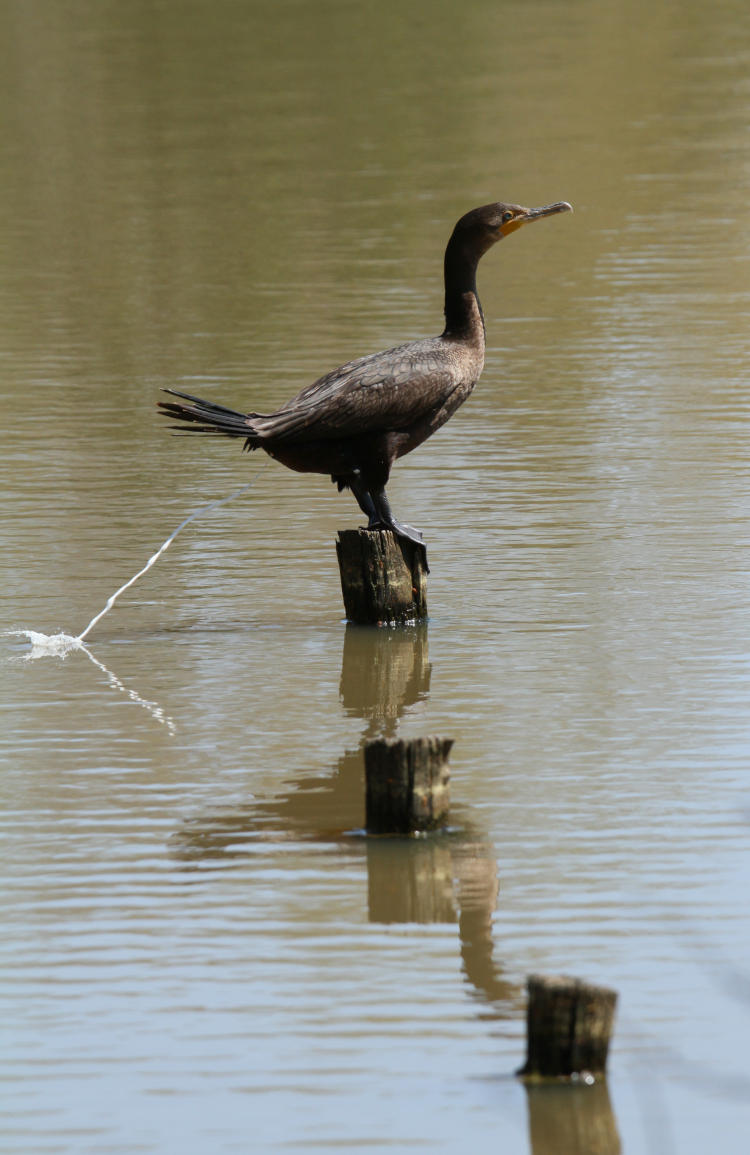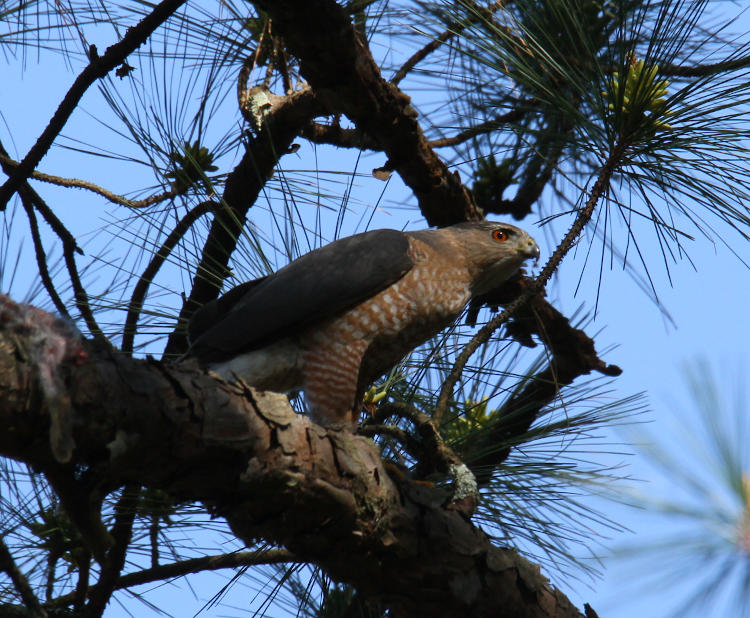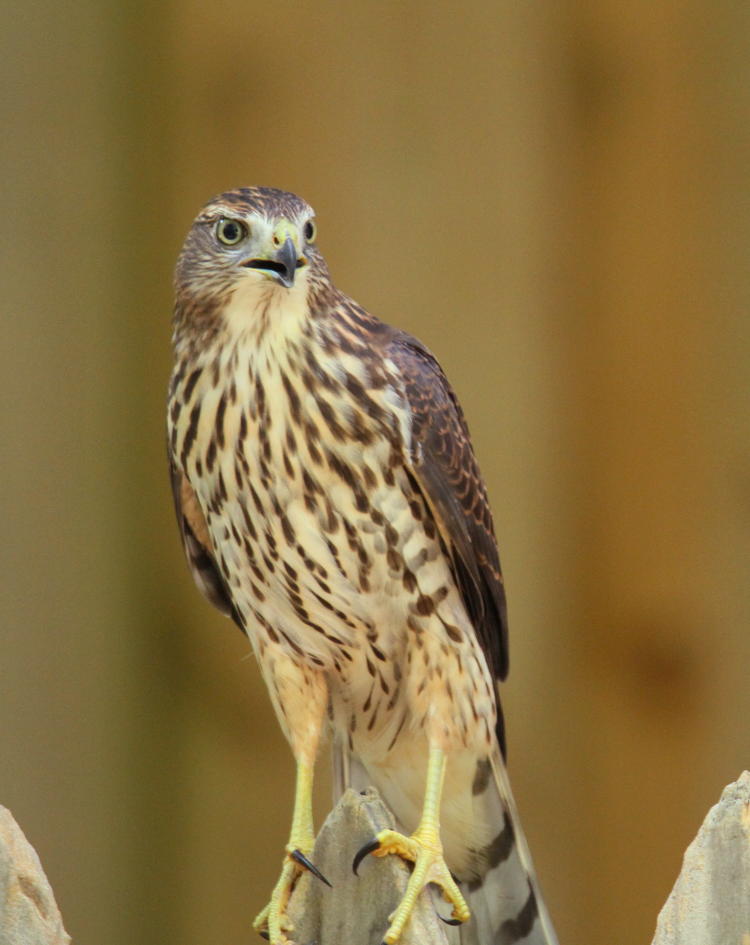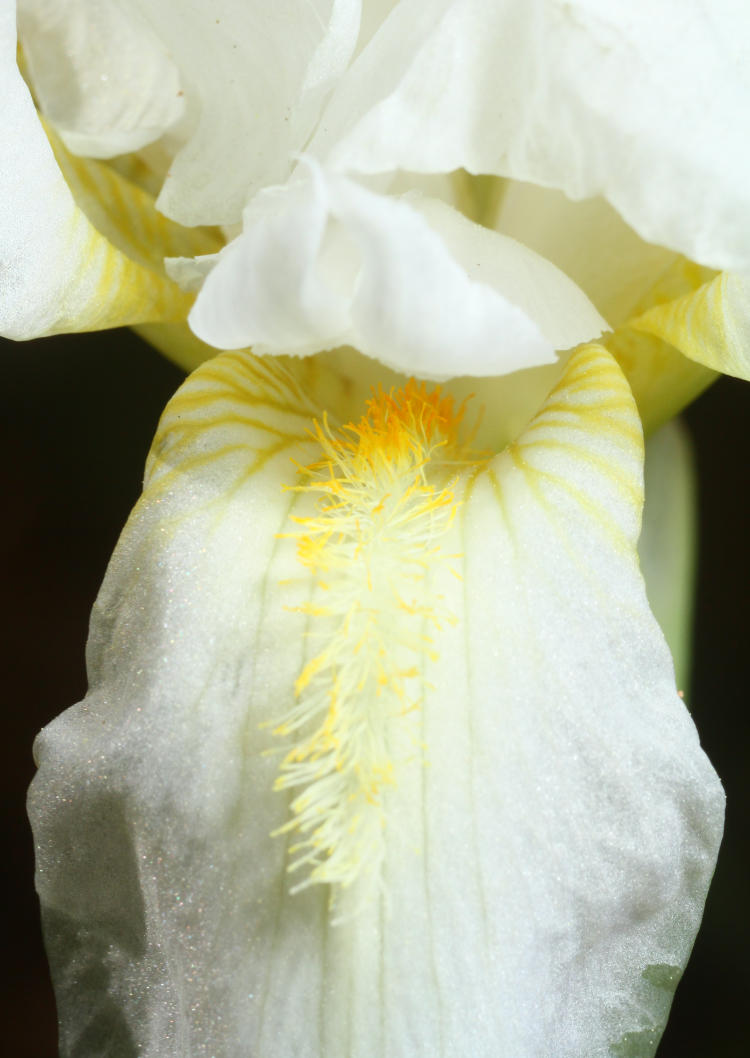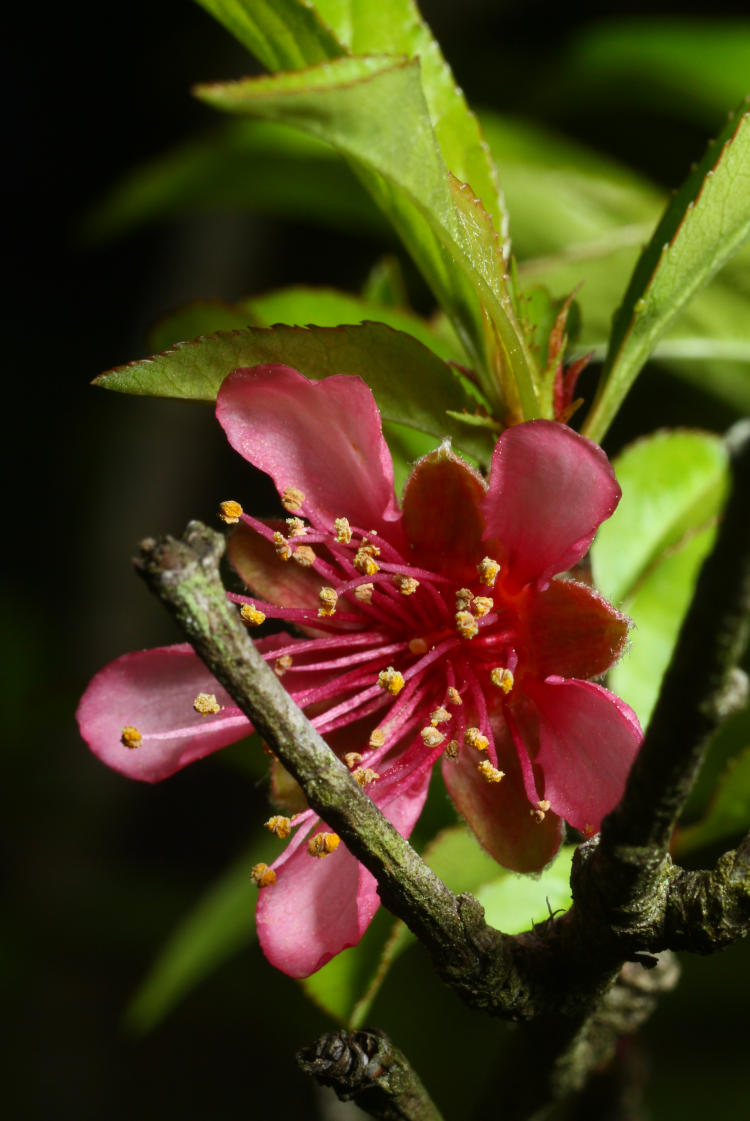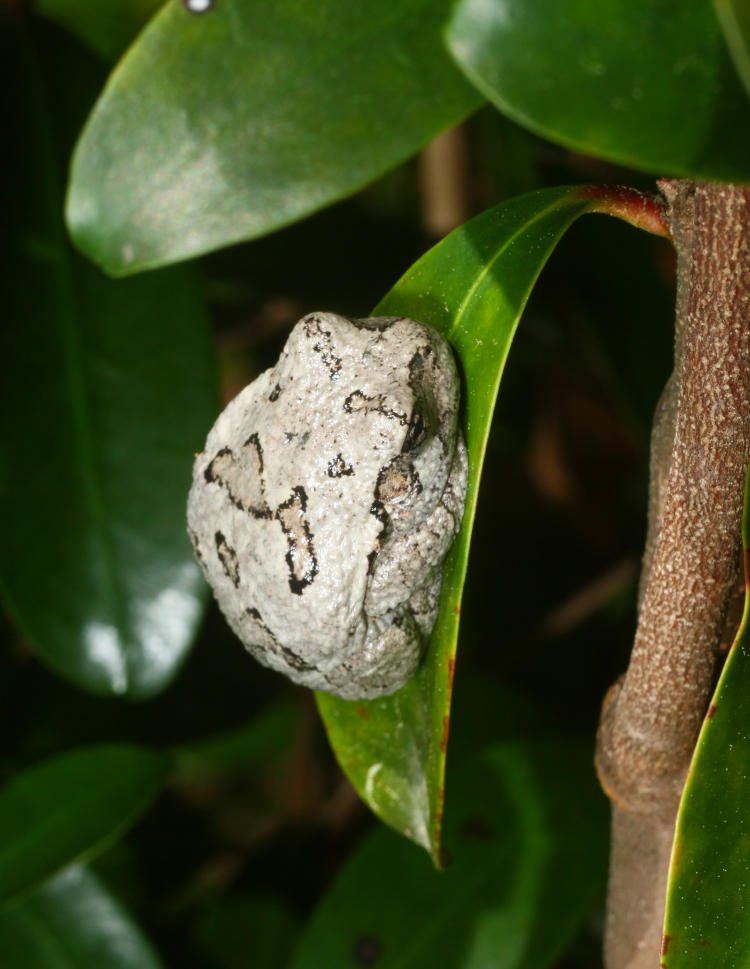I was asked if I was going to do a post regarding the pine pollen this year, and I considered this kind of redundant and basically said, Only if I get something remarkable. And now, I’ll let you decide, because damn, it’s been a heavy year. North Carolina is virtually overrun with longneedle pines – they’re ugly, they can take over any wooded area within a couple of decades, and they produce copious, choking amounts of pollen right around this time of year. Seriously.

Out at Jordan Lake, the water’s edge was typically stained that curious greenish-yellow, and large patches of the pollen could be found getting blown across the surface; with enough sight distance, a yellow haze could easily be seen in the air, and in a headlamp’s beam at night, it actually looks like fine mist. Gradually, it turns brown, and eventually either sinks or gets washed away. But until that time, it looks like a sulfur mine exploded.
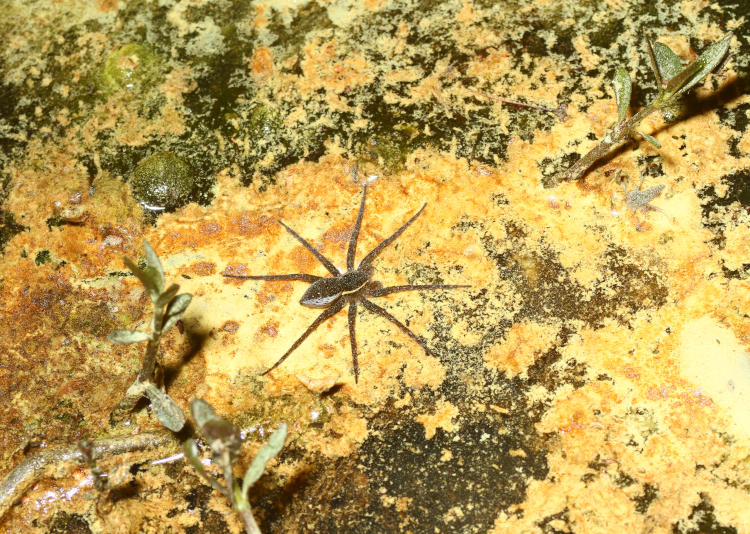
This little six-spotted fishing spider (Dolomedes triton) was not likely to catch anything in this muck which, as stagnant and polluted as it looks, is simply what occurs in the leeward portion of any body of water. And yes, you can see the dusting of pollen over the entire spider. It gets more noticeable, though.

This Copes grey treefrog had only been out of its daytime shelter for an hour or so, but was easily showing the effects, and this was right here in the yard at Walkabout Studios, also the location of the next.
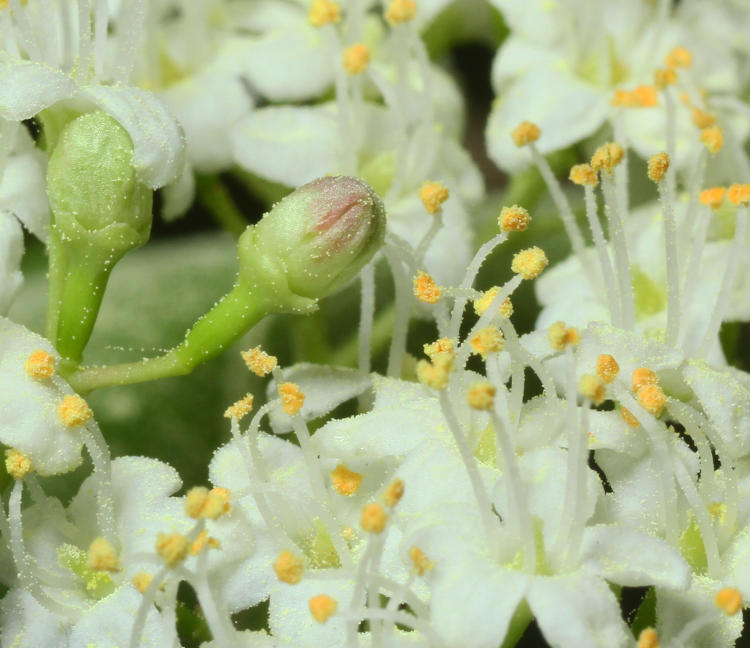
These are more of the flowers seen earlier, and The Girlfriend has identified these as viburnum. It’s a good thing that most species can’t hybridize, because every plant (and more than a few animals) in North Carolina would soon be a pine mule. While over at the nearby pond, it showed far better.

The damselflies are becoming more visible, and several were sleeping on some fine reeds at the water’s edge. The one, only about 30mm long, may be a female eastern forktail (Ischnura verticalis,) but don’t bet the GameStop portfolio on it. And this isn’t close enough for the full effect, so closer we go.
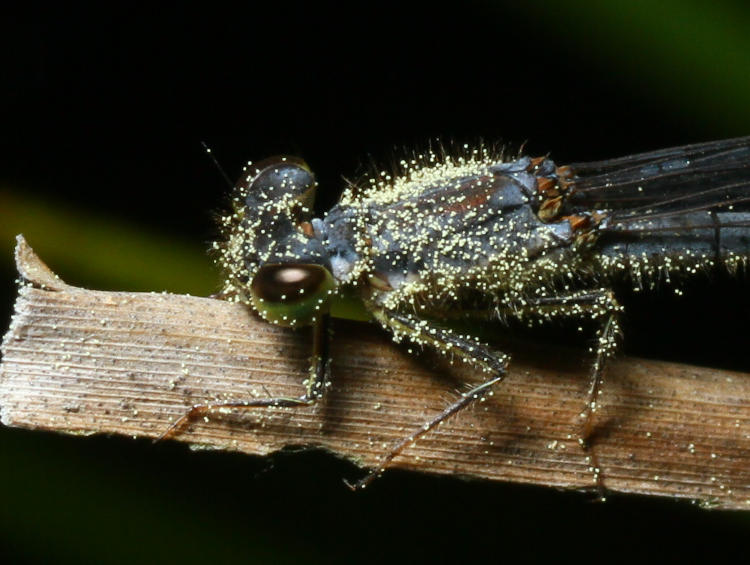
I really do wonder what pollen does to compound vision, but I’m quite sure, once awake, the damselflies would clean their orbs before flight.
Now that you’ve seen those, this fartsier one will probably be easier to figure out.

This could be a male and female of the same species above, but I didn’t do any side shots and the markings are too obscured to be seen clearly enough anyway. They’re damselflies – that’s enough.
And they weren’t too far from this guy.
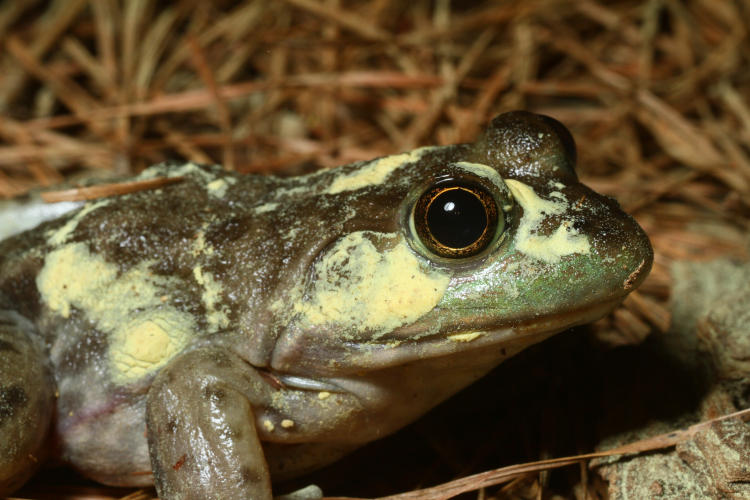
This American bullfrog (Lithobates catesbeianus) had apparently surfaced through a cloying layer of pollen, which had then dried onto its skin, getting additionally dusted by the airborne particles. On the plus side, it could easily blend in with a butter-and-pickle salad. Mmm, now I’m hungry.
All of this was last week, however. Just after peak production, the rains rolled in, and most open surfaces got washed free of the pollen with little to return, at least for another year. The stuff still remains in cracks and crevices, and cars need to be meticulously cleaned to eradicate all that which seeps into the seams, but at least things are looking a bit more normal. Here’s a trio of happy rosemary flowers just after the rains, showing off.
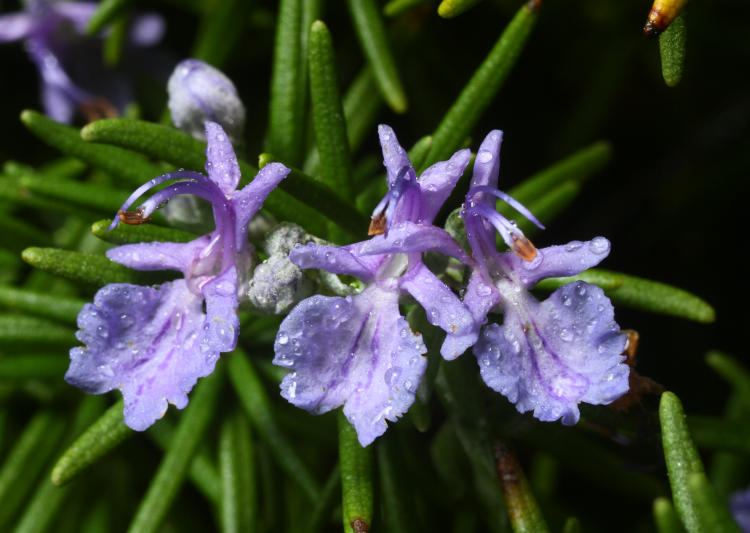
And more will be along in another little bit. Take your anxiety meds – it won’t be long.





















































 I had to do a bit of searching for photos of the real thing, of which there are few (as in, just one of the launch itself) to try and get some details correct, and at 1/100 scale, it stands 38cm tall. This particular kit featured a semi-detailed orbital capsule, which also took a few searches to get the details of – this is what modellers do. I didn’t go nuts with it, because if I wanted to do fine detail it wouldn’t be for something so small, but I did end up adding some stuff to the capsule beyond what the kit provided.
I had to do a bit of searching for photos of the real thing, of which there are few (as in, just one of the launch itself) to try and get some details correct, and at 1/100 scale, it stands 38cm tall. This particular kit featured a semi-detailed orbital capsule, which also took a few searches to get the details of – this is what modellers do. I didn’t go nuts with it, because if I wanted to do fine detail it wouldn’t be for something so small, but I did end up adding some stuff to the capsule beyond what the kit provided.
